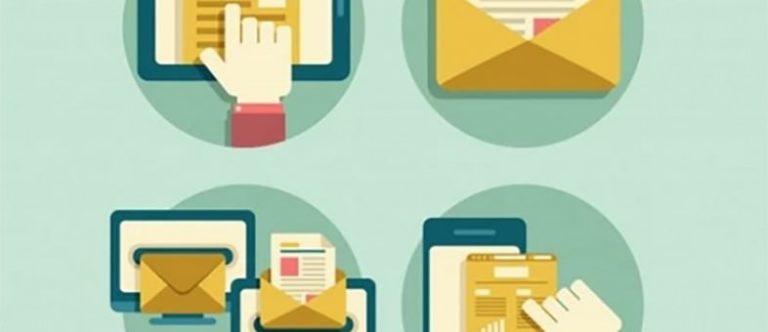Where can I find a PPP loan?
In early March, I received a call from a trusted friend in New York while I was at the gym. “This coronavirus is going to shut down the entire country,” he said. Like most of us, I ignored the warning and attributed it to a cautionary overreaction. And like most of us, I was wrong. Fortunately, it seems like most Americans are complying with regulations, meaning that the initial grizzly projections may not come to fruition. And with these unprecedented times come silver linings — more time to spend at home with loved ones (and pets), more time to finish our seemingly unending pile of unfinished projects, and a world unifying under a common goal.
Our businesses have all but shut down. Where my calendar was once full of bookings, I’m staring at empty dates. Like all massive shutdowns, this too will eventually revert to the mean. But in the meantime (bad math joke), the government has stepped in to help small businesses everywhere. Unfortunately, this has been a total disaster of a rollout. I’ve been working with accountants, journalists, and friends to keep abreast of the Paycheck Protection Program (henceforth the PPP) and the EIDL (Economic Injury Disaster Loan), and I hope this article will be a helpful resource to all small business owners.
Please note, I am not a CPA or financial advisor, nor in any way credentialed to give financial advice. View the following only as opinions based on my research, and please consult with your own professional financial advisor or CPA before making any decisions. I’m not liable for any decisions you might make.
So now onto the good stuff:
In late March, the Senate passed the “Coronavirus Aid, Relief, and Economic Security Act,” henceforth referred to as the CARES Act. $377 billion dollars of that act has been earmarked for small businesses. The two main components of this are the PPP and the EIDL.
EIDL Program
The EIDL program has been around for quite some time, and now includes COVID-19 assistance. Businesses must fit the following criteria:
- In existence on January 31, 2020
- Fewer than 500 employees
- Co-ops, ESOPs, and tribal small businesses (fewer than 500 employees)
- Sole proprietors
- Independent contractors
- Most private nonprofits
You will be eligible for a $2 million working capital loan at a rate of 3.75% for businesses, or 2.75% for non-profits with up to a 30 year term. Payments on COVID-19 loans are deferred for one year, and up to $200,000 can be approved without a personal guarantee. No collateral is required for loans of $25,000 or less,
But the EXCITING part of it is that there is a $10,000 GRANT (doesn’t need to be paid back) component, which should be in your account sooner than later. You can apply easily (took me about 15 mins) at https://covid19relief.sba.gov/#/. The fine print says that IF you can also secure a PPP loan, the $10,000 grant will be subtracted from the forgiveness amount.
But seeing as the PPP loans seem a bit tougher to apply for (as you’ll read below), I think this is a good place to start. You can also use it for more flexible spending than with the PPP. It can be used to cover paid sick leave, payroll, and event repaying obligations that cannot be met due to revenue loss (for entertainers, think about those refunds we had to issue to clients, or contracts that we only received 50% of).
As a side note, the SBA explicitly states that “the Paycheck Protection Program loan funds and the Economic Injury Disaster Loan funds cannot be used for the same purpose.” Make sure to document how you use the funds! It may be wise to set up a separate bank account to house these funds so that there is a paper trail of their exact use. Just a thought.
PPP Program
This is the “loan” (it’s really a grant in theory, if used properly) option that is more stringent in its use requirements, but also potentially more rewarding. And definitely much harder to get. In theory, you should be able to apply with any local branch of your bank. But as I learned personally, many banks (including San Diego County Credit Union, whom I bank with) aren’t participating. And with many of the ones who are, you must be an existing customer. And even then, banks like Wells Fargo have shut down the loans because they got slammed with too many applications. In other words, I’ll be shocked if I ever see the money. But it’s definitely worth applying for. I’ll explain a bit about the program first, and then give you some options.
The loan can be used for small businesses with less than 500 employees that was in business on or before February 15, 2020. This means it works for S Corps, C Corps, LLCs, sole proprietorships, and even independent contractors. Independent contractors and “Schedule C” businesses will not be eligible to apply until April 10, 2020.
In order to have the loan forgiven, you MUST use it at least 75% on payroll costs (which can include employer paid retirement contributions), and the remaining 25% can be used for business rent, interest on business mortgage debt, and utilities. You’ll want to talk with your accountant to structure this correctly, but it shouldn’t be tough to do. And remember NOT to double dip into what you’re using the EIDL for.
You can receive up to $10 million (!) dollars, but most of us won’t. You can qualify for up to 2.5x your average monthly payroll costs. How is this calculated? Well, it’s changed multiple times since the law was rolled out quickly and presents many contradictions.
The basic idea is that you take your gross payroll for a year, divide by 12, and multiply by 2.5. And BINGO, that’s the amount. But it’s not really that simple. An approximate calculation can be arrived at as follows:
- Start with your gross payroll costs (these include employer paid state taxes, healthcare benefits, and retirement contributions contributions, but not ROTH IRA contributions) for employees whose principal place of residence is the United States. For a sole proprietorship with no employees, that’s your net profit (line 31 of your Schedule C).
- Subtract compensation paid to yourself or any employee over $100,000. For instance, if your compensation is $120,000, you would have to subtract $20,000.
- Divide this number by 12 to get your average monthly payroll.
- Multiply this by 2.5.
A few caveats and tips:
- The CARES act specifically says to use the prior 12-month period for calculating payroll. In this case, that would be April 1, 2019 – March 31, 2020. HOWEVER, first quarter 941s haven’t been filed yet for companies who run payroll, so many banks are asking for calculations based on Jan 1, 2019 – December 31, 2019.
- For sole proprietors, retirement contributions and healthcare come AFTER the schedule C, so the calculation is simple. Simply divide line 31 of your Schedule C by 12 and multiply by 2.5.
- For LLCs, S and C corps, make sure that you use GROSS payroll for step 1. You’ll want to make sure that these are included in your calculations. Healthcare benefits, employer paid retirement contributions, parental and sick pay should all be included. The $100,000 payroll cap ONLY applies to the wages for the employee, not to their benefits. Don’t leave extra money on the table!
So now for the big question. WHERE do I apply?
Unfortunately, most banks haven’t been easy to work with. Make sure that you have all your required documents together, which may vary by state and lender. A preliminary list is:
- IRS Forms 941 for all 4 quarters of last year
- IRS Form 940
- Payroll summary reports
- Healthcare Pay reports
- Retirement contributions
- W2s, 1099s
- 2 forms of ID: Drivers License and Passport
- A completed application (found at https://home.treasury.gov/system/files/136/Paycheck-Protection-Program-Application-3-30-2020-v3.pdf)
Based on my research, you may apply at multiple banks, but only one loan will be approved. So I recommend spreading out multiple applications, as this is first come first serve, and we can’t control how fast banks will get to our application.
NOTE: UPDATED 4/10: I’VE HEARD MIXED REPORTS ABOUT APPLYING THROUGH MULTIPLE BANKS. PLEASE CHECK THIS WITH YOUR ACCOUNTANT.
Start with seeing if your local bank is an SBA approved lender and participating. You may have received an email from them or found a way to apply online.
Secondly, visit Fundera.com and Lendio.com. These FinTech loan brokers act as middlemen to process your application, and they get their commission from the bank. They have a financial incentive to source your loan.
After that, I would fill out applications with a few different banks who currently seem to be accepting applicants from outside of their clientele. A few that I’ve found:
Sunrise Banks: https://sunrisebanks.com/paycheck-protection-program/
Bank of Southern California: https://www.banksocal.com/coronavirus/
Celtic Bank: https://start.celticbank.com/paycheck-protection-program
Hanmi Bank: https://www.hanmi.com/covid19-support
And finally, you can hedge bets by filling out inquiry forms with banks who seem to be preparing to hop on board. But keep in mind that the money may be gone by then. Two other banks to check in with are below.
Thanks for reading, please share, and leave a comment below if you have more information to add! And if you would like to receive my monthly newsletter and don’t already, you can sign up at the”Stay in Touch” form at the top of this page (or below on mobile).
Kevin Viner
I’m a professional mentalist who travels the world performing. Beyond my profession, my interests include writing music, guitar, aviation, martial arts, and mathematics.







The information you’ve efficiently distilled will be helpful for many, I’m sure. Best of luck until we get to the other side.
Thanks Sherry, glad you took the time to look it over :). Hope you’re well.